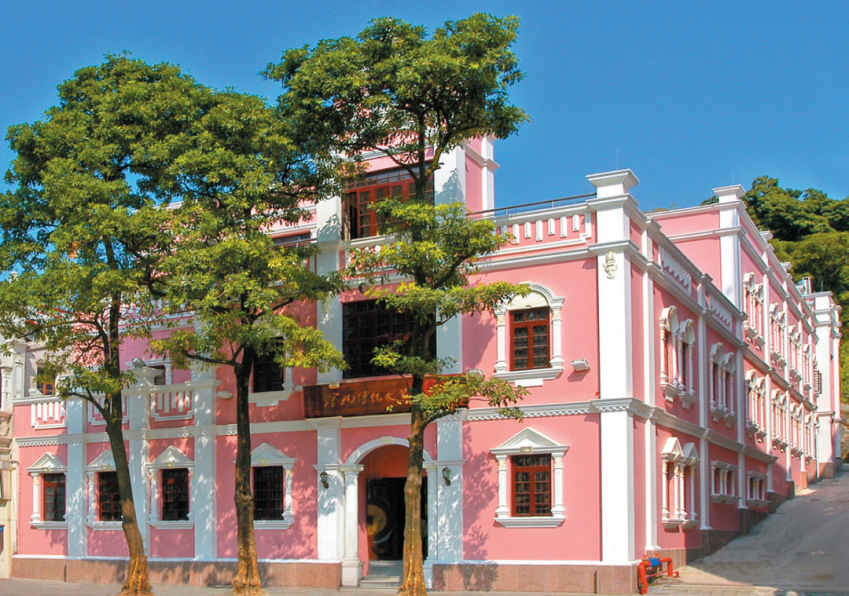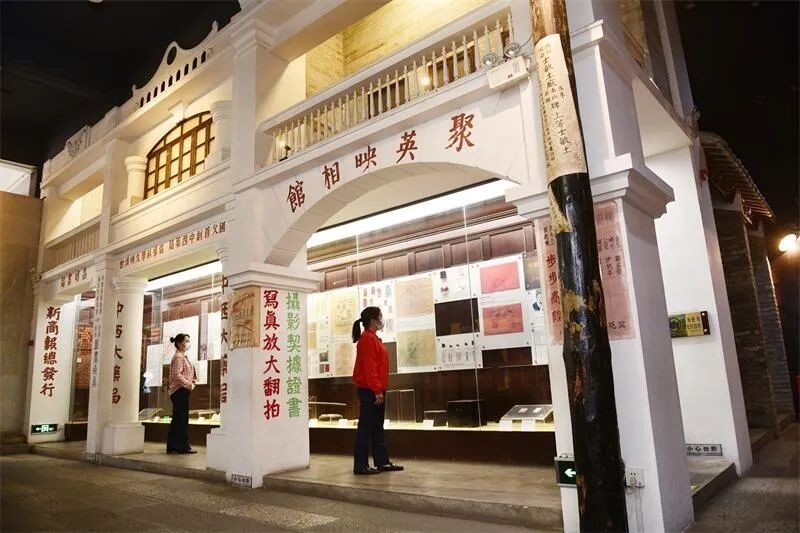Located on the west bank of the Pearl River estuary, Xiangshan was an essential stop for merchant ships departing from Guangzhou on the ancient Maritime Silk Road. Since the Song Dynasty, Xiangshan had become a distribution center for commodities, seeing the booming of commerce.

From the Ming and Qing dynasties until modern times, due to its advantageous geographical location adjacent to Macao, Xiangshan gradually became a meeting point of Sino-foreign trade and of Chinese and Western cultures, with the commerce sector in Xiangshan developing rapidly.
The "Eighteen Commercial Stores" emerged on the Sunwen West Road Pedestrian Street in those days, selling almost everything such as paper, cloth, ceramics, dried seafood, groceries, traditional Chinese medicine, lighting fixtures and etc. Sunwen West Road was called the "Small Hong Kong" and the "Small Macao" then, and today, it is still one of the most distinctive business circles in Zhongshan.
Under this strong business atmosphere, Zhongshan has given birth to many business theories that have profoundly influenced modern and contemporary commerce in China. For example, Zheng Guanying's "Commercial War" theory, Sun Yat-sen's mercantile philosophy, and the operation principles of four major department stores. As a result, the Zhongshan people came up with an idea to build a commercial museum and later put it into practice.

On Sunwen West Road, you will see a pink building, and that is the Xiangshan Commercial Culture Museum. It is the first commercial culture-themed museum in China, and it is located at the former site of the Shiqi Town General Chamber of Commerce in the 1940s.

Through images, models, audio and text materials, duplicated scenes and interactive facilities, the museum shows you the business development, commercial culture and business celebrities in Zhongshan from the late Qing Dynasty to the early days of Republic of China, Sun Yat-sen and Zheng Guanying's business ideas, stories of compradors from Xiangshan during the early modernization stage of China, the establishment of four major department stores, and etc.
Police Registration Number: 44200002442868
Website ID: 4420000052
Sponsored by: Office of Zhongshan Municipal People's Government
Technical Support: Information Center of Zhongshan
Without written authorization from Zhongshan Municipal People’s Government, the content of the site shall not be republished or used in any form.
About Us | Site Map| Privacy Statement| Contact us
